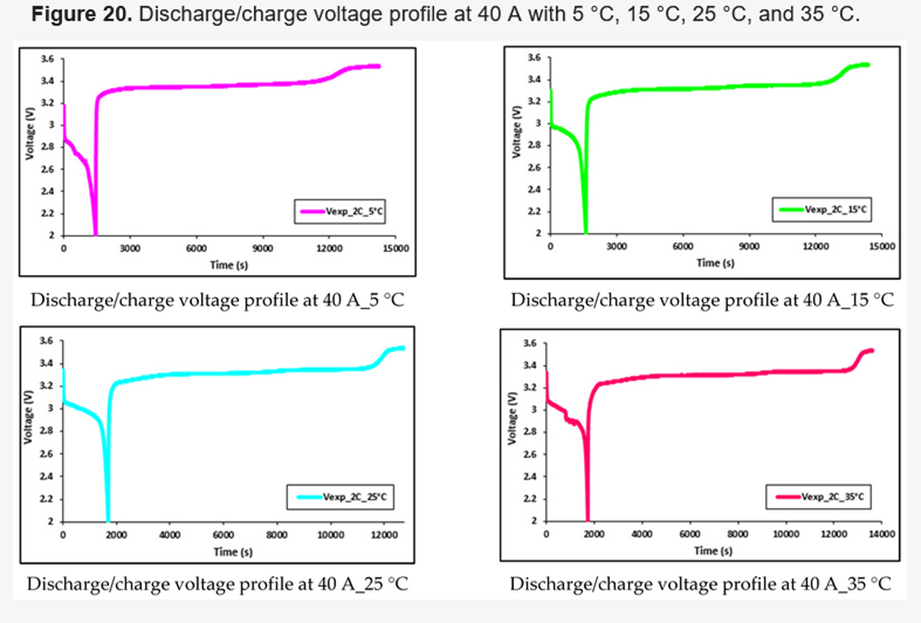Numerical Simulation of Cooling Plate Using K-Epsilon Turbulence Model to Cool Down Large-Sized Graphite/LiFePO4 Battery at High C-Rates
In this paper, an analogous study of the velocity and temperature profiles inside microchannel cooling plates (with hydraulic diameter of 6 mm), placed on a large pouch-type LiFePO4 battery, is presented using both the laboratory and simulation techniques.

For this, we used reverse engineering (RE), computed tomography (CT) scanning, Detroit Engineering Products (DEP) MeshWorks 8.0 for surface meshing of the cold plate, and STAR CCM+ for steady-state simulation. The numerical study was conducted for 20 A (1C) and 40 A (2C) and different operating temperatures. For experimental work, three heat flux sensors were used and were intentionally pasted at distributed locations, out of which one was situated near the negative tab (anode) and the other was near the positive tab (cathode), because the heat production is high near electrodes and the one near the mid body. Moreover, the realizable k-ε turbulence model in STAR CCM+ is used for simulation of the stream in a microchannel cooling plate, and the computational fluid dynamics (CFD) simulations under constant current (CC) discharge load cases are studied. Later, the validation is conducted with the lab data to ensure sufficient cooling occurs for the required range of temperature. The outcome of this research work shows that as C-rates and ambient temperature increase, the temperature contours of the cooling plates also increase.
Authors: Satyam Panchal, Krishna Gudlanarva, Manh-Kien Tran, Münür Sacit Herdem, Kirti Panchal, Roydon Fraser, and Michael Fowler
In the same category
- A Smart Battery Management System for Electric Vehicles Using Deep Learning-Based Sensor Fault Detection
- Autel Energy Europe at AEC 2024: Pioneering the Future of Ultra-Fast EV Charging
- Baden-Württemberg International: Your partner for a successful expansion
- Business Region Goteborg : Gothenburg - Pioneering tomorrow's mobility
- Charging Electric Vehicles Today and in the Future
- Comparative Study of Permanent Magnet, Conventional, and Advanced Induction Machines for Traction Applications
- Design Methodology and Circuit Analysis of Wireless Power Transfer Systems Applied to Electric Vehicles Wireless Chargers
- Designing High-Power-Density Electric Motors for Electric Vehicles with Advanced Magnetic Materials
- Energy and Environmental National Assessment of Alternative Fuel Buses in Morocco
- Energy Management and Optimization of Large-Scale Electric Vehicle Charging on the Grid
- Fuel Cell Hybrid Electric Vehicles: A Review of Topologies and Energy Management Strategies
- Numerical Simulation of Cooling Plate Using K-Epsilon Turbulence Model to Cool Down Large-Sized Graphite/LiFePO4 Battery at High C-Rates
- Using an Intelligent Control Method for Electric Vehicle Charging in Microgrids
- Will Utrecht become the world's first bidirectional city?